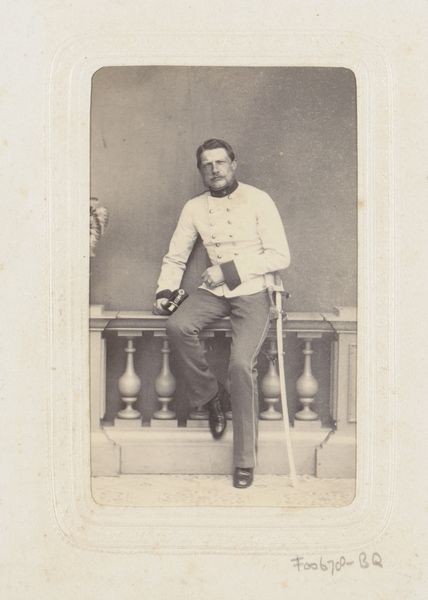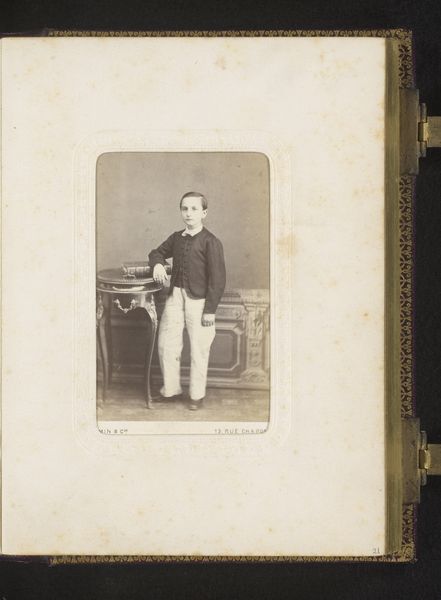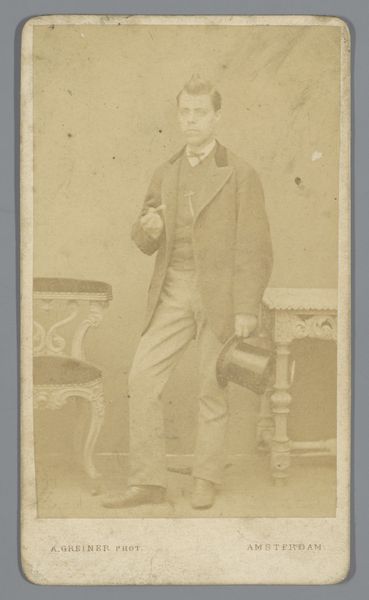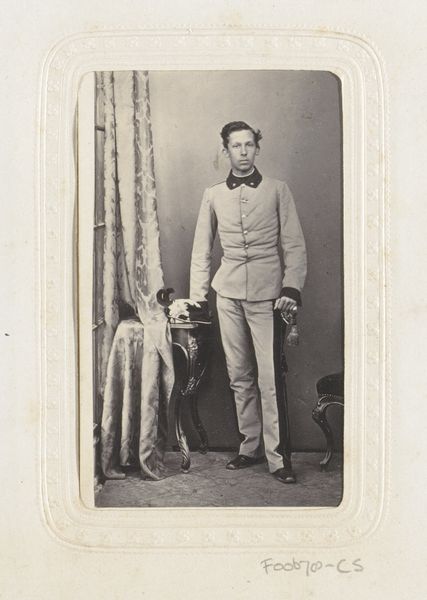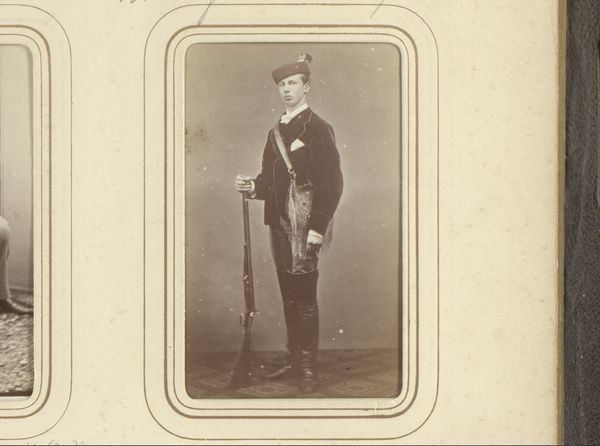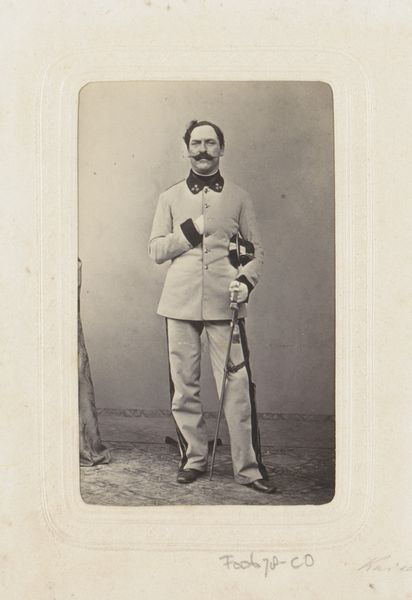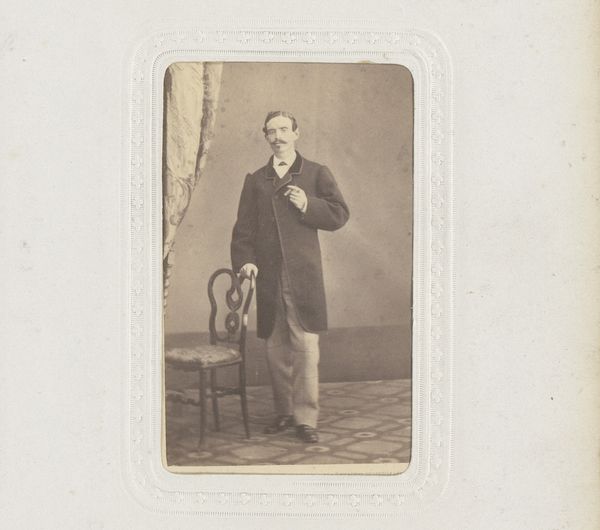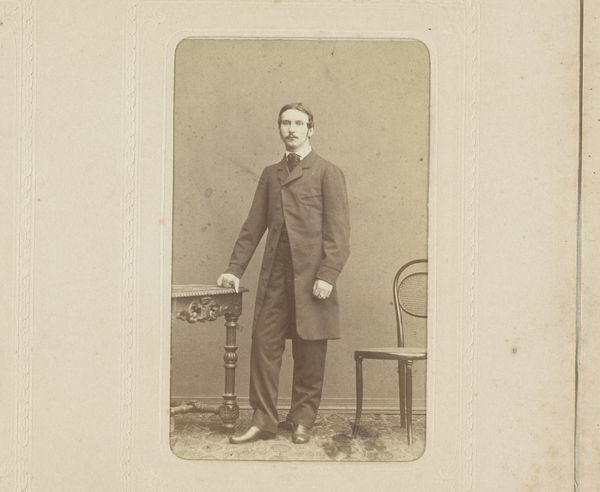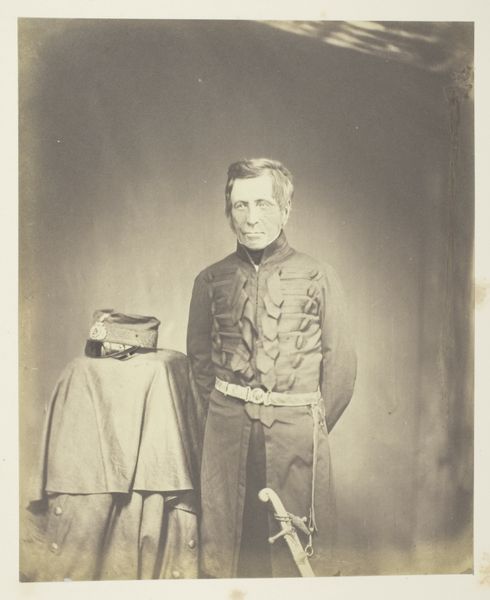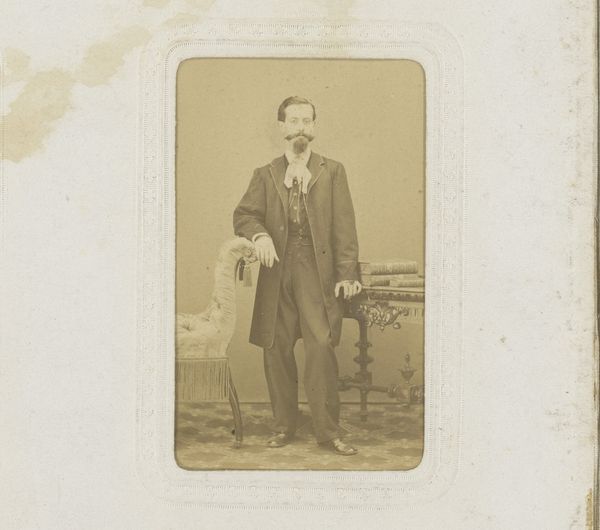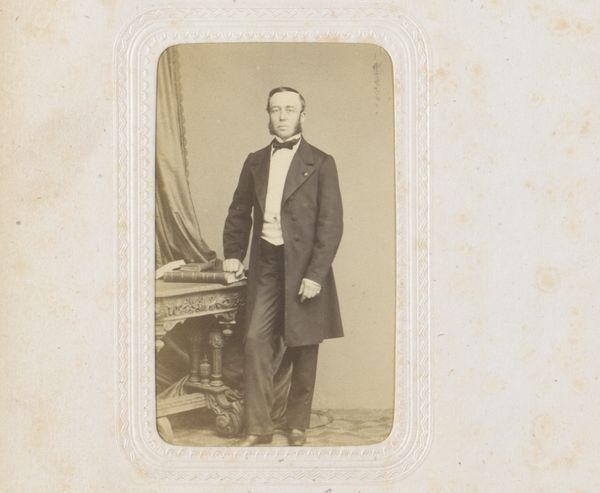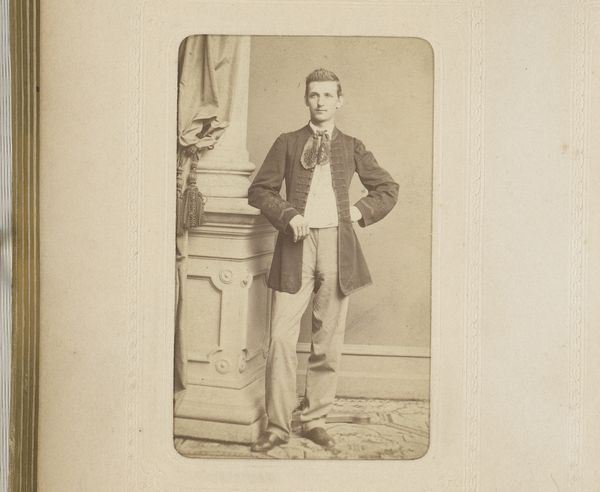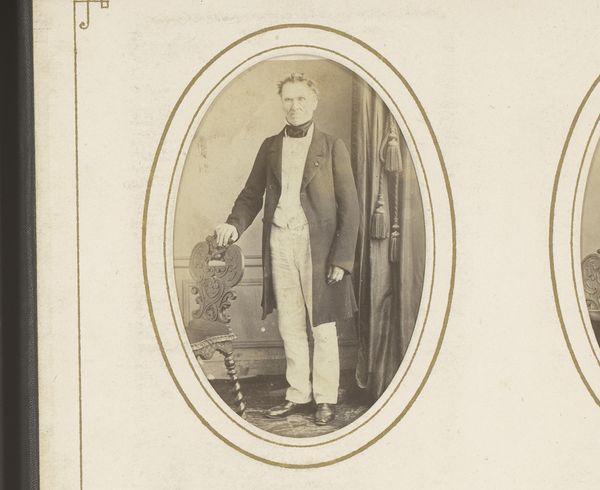
photography, gelatin-silver-print
#
portrait
#
archive photography
#
photography
#
historical photography
#
gelatin-silver-print
#
history-painting
#
academic-art
Dimensions: height 87 mm, width 53 mm
Copyright: Rijks Museum: Open Domain
Curator: Here we have an albumen silver print titled “Portret van een staande militair,” placing its creation somewhere between 1860 and 1880, attributed to Franz Segl. Editor: What strikes me first is the materiality of the print itself. Look at the texture, the subtle shifts in tone achieved through the gelatin silver process. There's a distinct physicality; a result of careful crafting and the artist’s hand manipulating the photographic process itself. Curator: Absolutely. It’s a staged portrait, part of a larger visual culture where military imagery served political and social functions. The photograph offers a sense of order and perhaps even empire during a time of change. How was military status constructed, communicated and consumed in Austro-Hungarian society? Editor: I wonder about the studio setup. The backdrop seems painted, artificial. And the ornate details on his uniform–are those real embellishments or crafted through photography’s manipulations? The buttons, epaulettes; it suggests a level of intense production and a deliberate performance of class and station. The very labor involved to render these material forms in an image! Curator: And this intersects with broader imperial ambitions. The military as a powerful tool for projecting power, domestically and abroad. Photographs like this circulated widely, reinforcing notions of national identity, patriotism and military service. The way it makes this figure very real for the folks at home is compelling. Editor: Do we know if Segl had military connections? Maybe even specific commissions from the military. It changes how we might read his artistic intentions versus the power relations between maker and the patron. How the structures of artistic patronage itself worked and were supported through social means! Curator: That’s a key point. Archival research into Segl's practice could definitely shed light on the commissioning context and distribution networks for photographs like this. Editor: These traces of history imbued into physical artifacts of the period create a compelling perspective when reconsidering what defines value and reception of art. Curator: Thinking about it this way really brings this photographic print alive, thank you. Editor: Likewise! This encounter certainly deepens our consideration for this type of historical medium.
Comments
No comments
Be the first to comment and join the conversation on the ultimate creative platform.
